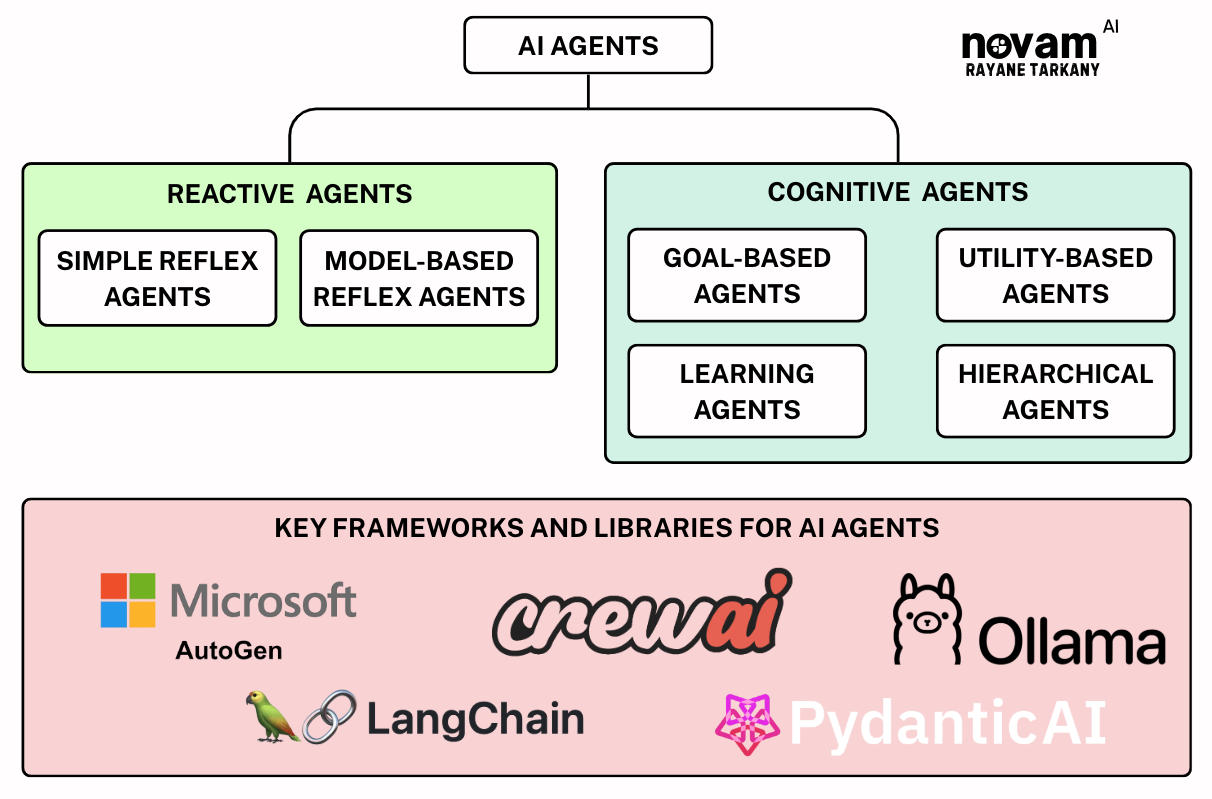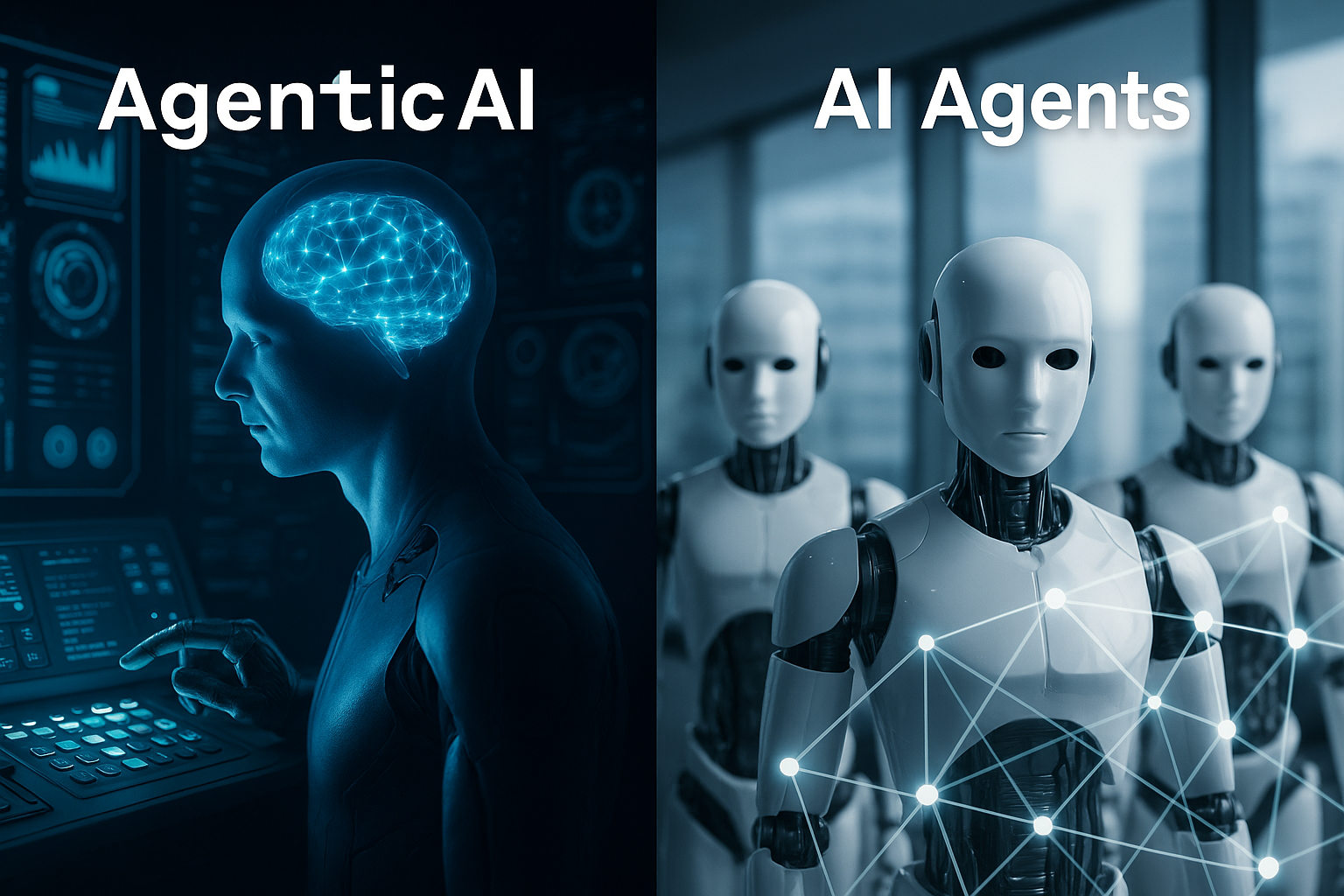What Are AI Agents?
AI agents are intelligent systems designed to autonomously perform tasks, make decisions, or provide insights based on their programmed goals. These agents can operate independently or collaboratively, depending on their design, and are widely used in domains ranging from customer support to autonomous vehicles.

Categories of AI Agents

Overview
| Feature | Single-Agent System | Multi-Agent System |
|---|---|---|
| Collaboration | None | High |
| Complexity | Low | Moderate to High |
| Scalability | Limited | High |
| Robustness | Lower | Higher |
| Use Cases | Task-specific systems | Complex, multi-domain tasks |
Behavioral Approaches of AI Agents

These describe how agents think and act, regardless of whether they are single-agent or multi-agent systems:
-
1. Reactive Agents: directly to their current environment without considering past states or future goals.
- Quick response based on condition-action rules.
- No memory or ability to plan.
-
2. Cognitive Agents: use reasoning, planning, and learning to make decisions.
- Can process past states and plan future actions.
- Adaptive and goal-oriented.
Six Types of AI Agents
Within these two categories, AI agents can be further classified into six types, based on their functionality and decision-making capabilities:

-
Simple Reflex Agents (Reactive, Single-Agent)
- Act based on current conditions without storing history.
- Operate on condition-action rules (e.g., if-then statements).
- Example: Rule-based chatbots.
-
Model-based Reflex Agents (Reactive, Single-Agent)
- Maintain a model of the environment to enhance decision-making.
- Example: AI decision-making systems like AWS Bedrock.
-
Goal-based Agents (Cognitive, Single or Multi-Agent)
- Take actions to achieve a specific goal.
- Plan actions based on current state and desired outcomes.
- Example: Navigation systems calculating optimal routes.
-
Utility-based Agents (Cognitive, Single or Multi-Agent)
- Assign utility scores to different options and choose the best.
- Ideal for tasks requiring trade-offs and optimization.
- Example: AI for resource allocation.
-
Learning Agents (Cognitive, Single or Multi-Agent)
- Learn from past experiences and adapt behavior over time.
- Use feedback to improve performance.
- Example: Machine learning systems like recommendation engines.
-
Hierarchical Agents (Cognitive, Multi-Agent)
- Operate in a hierarchical structure where higher-level agents supervise lower-level agents.
- Effective for task prioritization and complex systems.
- Example: Multi-robot systems in supply chain management.
Key Frameworks and Libraries for AI Agents
| Framework/Library | Purpose | Features | Use Cases |
|---|---|---|---|
| LangChain | Build LLM-powered applications | Chain tasks, manage memory, integrate tools | Conversational agents, Q&A systems |
| Autogen | Automate multi-agent collaboration | Task delegation, multi-agent orchestration | Workflow automation, task management |
| RAG | Combine LLMs with information retrieval | Embedding-based retrieval, vector database integration | Domain-specific chatbots, contextual AI |
| CrewAI | Distributed multi-agent coordination | Real-time decision-making, scalable for large systems | Robotics, simulation, logistics |
| Pydantic AI Agents | Use Pydantic for data validation in AI pipelines | Structured data validation, consistent data flow | Healthcare, financial systems |
| Magentic One Ollama | Advanced multimodal and enterprise-level agents | Text, image, and video handling, enterprise tool integration | Customer support, multimodal AI solutions |
👉 What’s Next: From Agents to Agentic AI
If you found this article helpful and want to explore how agents are evolving into more autonomous, tool-using, reasoning-driven systems, check out the next article in this series:
🧠 Agentic AI vs. Agents AI: The Future of Autonomous Systems







Start the conversation